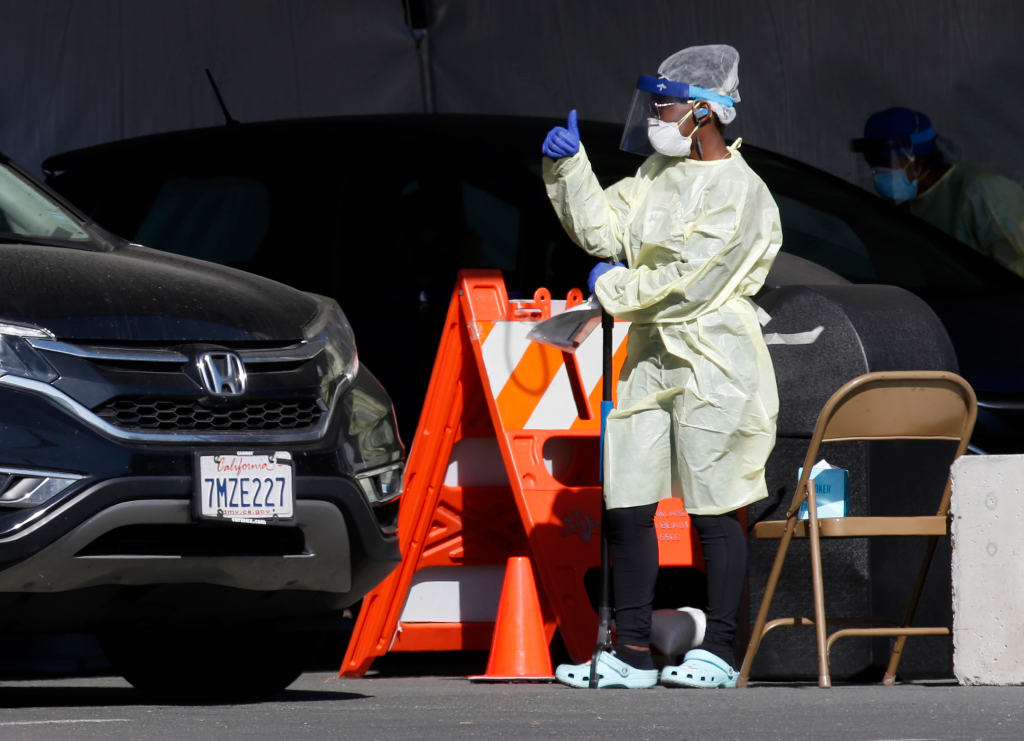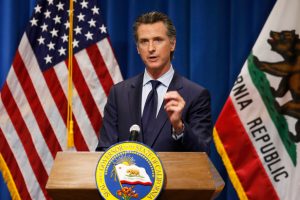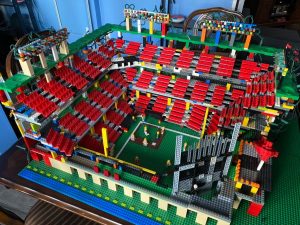Coronavirus outbreaks are surging in Arizona, Nevada and much of Southern and Central California. So could the Bay Area be next?
A cautious pace of reopening has kept the region in a relative bubble of COVID-19 calm as hospitals from Phoenix to Los Angeles rapidly filled. But there is no guarantee the Bay Area’s bubble won’t burst, with troubling signs from surging cases to hospitalizations rising faster than elsewhere in the state.
“I think we have to worry all the time,” said University of California-San Francisco epidemiologist Dr. George Rutherford, noting a recent surge of cases in the city over the weekend. “This is clearly problematic.”
After weeks of defending a steady pace of reopening amid rising cases, Gov. Gavin Newsom is cracking down again, urging Imperial County, with the state’s worst outbreak, to reimpose the stay-home order, forcing bars there and in six other counties to close and recommended their closure in a half-dozen more.
More closures could come, Newsom threatened, if things worsen elsewhere.
How is the Bay Area doing compared to the neighbor states and California trouble-spots? The Bay Area this week recorded one of the region’s highest number of cases since the outbreak began and its COVID-19 hospitalizations outpaced the statewide rate.
Looking at the measures the state uses to monitor COVID-19 by county — disease transmission, hospitalization rate and capacity — there are signs of disturbing metrics among Bay Area counties. Santa Clara and Contra Costa counties were flagged as among the dozen with hospitalization increase rates growing faster than 10%. The rate in Contra Costa County was 13% and Santa Clara’s was 24.1%.
Santa Clara County’s hospitalization rate was lower only than Sacramento’s 42% and San Joaquin’s 27.5%. The state indicated that Santa Clara hospitals are suffering some spillover of cases from neighboring counties, while Sacramento has seen a number of outbreaks associated with family gatherings.
Although Bay Area hospitalizations have grown 45% in a week, in part from transfers from other areas, total numbers are lower than in Southern California counties including Los Angeles, Orange, San Bernardino, San Diego and Riverside.
But Santa Clara, Contra Costa and Solano counties are among the 19 counties the state has been keeping a close watch on. State officials attribute those counties’ troubles to different factors. Imperial County has had a combination of U.S. citizen residents traveling across the border in Mexicali for work, health care or other services, hospital staffing shortages and an outbreak at a meat packing plant. Newsom said Tuesday that four others will likely be added to the watch list.
In Contra Costa County, state officials report a rising number of “community transmission” cases not linked to isolated outbreak clusters such as in a business or nursing home. In Santa Clara County, they note a number of cases coming in from neighboring counties — Stanford Hospital is near the San Mateo County border — and that overall hospitalization numbers remain low.
How is California doing compared with other states?
Most epidemiologists keep their eye on the rate of positive tests, arguing that with testing more widely available now, it is a reasonable reflection of where outbreaks are growing. It also is a figure Newsom pays close attention to.
The five states with the highest seven-day average positive test rate Tuesday were Arizona (24.4%), Florida (15.6%), Alabama (15.2%) Nevada (15.1%) and Texas (14.1%). The U.S. average is 6.9%. California, with a 5.9% rate, looks good for now by comparison. Newsom noted that California has ramped up testing from just a few thousand a day to a new daily record of more than 106,000.
“When you test over 100,000 people in a 24-hour period, you’re going to see more people testing positive,” Newsom said. But he also noted the rate of positive tests, which had held steady under 5% for weeks, has crept up since.
“The positivity rate is particularly concerning,” Newsom said. “This is why we’re monitoring it particularly closely.”
Among Bay Area counties, the rate is 2.1% in San Francisco, 2.3% in Santa Clara, 4.7% in San Mateo, 5.3% in Marin and 5.9% in Contra Costa. Alameda County figures aren’t available because it doesn’t publicly report data.
Elsewhere in the state, among the higher county positivity rates were Orange (43.7%), Imperial (20.7%), Los Angeles (11.5%) and Fresno (10.6%).
Bob Wachter, chair of the UCSF department of medicine, noted on Twitter that hospitalized patients doubled in two weeks, much of which was transfers of patients from other areas that ran out of bed space, but he added that it shows the Bay Area’s not an island.
“Forgive the metaphor, but if somebody sneezes in LA, we’ll ultimately catch a cold in SF,” Wachter tweeted.
18/ SF not surging, but warning signs. @UCSFHospitals 16 pts, 5 on vents; ~double 2 wks ago. In SF, cases and hospitalizations up; most of bump in hospital pts is transfers from elsewhere. Forgive the metaphor, but if somebody sneezes in LA, we’ll ultimately catch a cold in SF. pic.twitter.com/KUH1wf1kqK
— Bob Wachter (@Bob_Wachter) June 30, 2020
He also dispelled the notion that California — which imposed the country’s first statewide stay-home order in March to slow the disease’s spread and has taken a methodical approach to reopening since — is faring better than its neighbors as a result.
1/ Covid (@UCSF) Chronicles, Day 104
Let’s talk California. Until recently, our state managed to do so well that our experience has been dubbed The California Miracle. But let’s say it clearly: The Miracle is over. The sooner we acknowledge that, the better off we’ll be.
— Bob Wachter (@Bob_Wachter) June 30, 2020
“Until recently, our state managed to do so well that our experience has been dubbed The California Miracle,” Wachter wrote. “But let’s say it clearly: The Miracle is over. The sooner we acknowledge that, the better off we’ll be.”
While “a bump in cases was expected” with reopening, Wachter added, “few (including me) expected it to be so fast & widespread.”
“Even in a state with mandatory masking & a sound re-opening plan, things went sour,” Wachter wrote. “Covid wins again: demonstrating that good leadership is crucial, but not sufficient.”



















